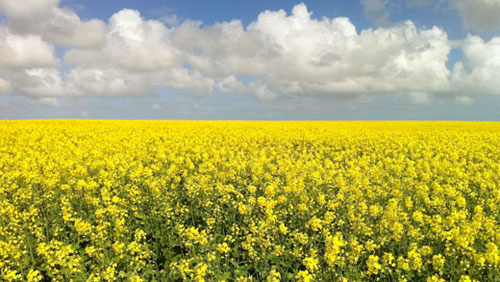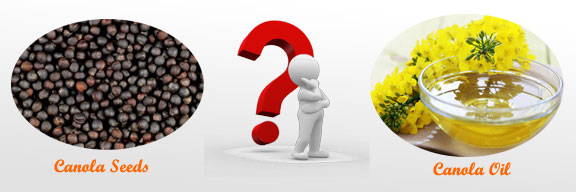Products
Useful Links
- Choose professional Small Sunflower Seed Oil Refinery Line
- Professionally Designed Mini Oil Mill for Home Use
- Is Small Oil Production Line Worth for Investment?
- How to Build Small Edible Oil Production Line?
- Small Oil Mill Plant for Daily Requirement
- Small Edible Oil Refinery Plant Cost Can Be Reduced Relatively
- How to Extract Palm Oil from Palm Fruit-Oil Mill Plant
- start oil extraction factory
Latest News
Apr 10, 2018
Mar 30, 2018
Australia canola crop harvest
Home > Useful Links >
The latest canola forecast from the AOF is only down slightly on the previous forecast, despite significant impacts on the crop due to frosts in NSW and Victoria. A very warm start to spring accelerated plant development, leaving crops more susceptible to weather extremes.Consequently, drier conditions and frosts in mid Spring in NSW and Victoria had a significant impact on canola crops. However, any losses in the east coast states has been almost completely offset by gains in WA, as this state experienced near perfect conditions in the last few months.
In NSW, a number of severe frost events in October impacted crops stretching from the South West Slopes through areas of the Riverina to the Victorian border. Losses across all grains in frost hit areas were reported to be in the range of 30-60% of crops. In affected canola crops, those that have carried through to harvest have reported yields as low as 0.3-0.5t/ha.The frost events compounded the impact of already moisture stressed crops through most of the State, with October being the 8th driest month on record and experiencing the highest average temperature across the state. Consequently, yield estimates have come back to 1.2t/ha across the state, down from 1.55t/ha in September, versus afive yearaverage of 1.8t/ha.
In Victoria, less extremes of temperature and rainfall were experienced, although northeast Victoria suffered from the same frost events in October as NSW. Crops in the Western Districts and Wimmera have fared well, expecting to yield close to long term average, although dry conditions in the Mallee combined with frost affected crops is expected to drag the state yield back to around 1.3t/ha versuse stimates earlier in the season of closer to 2t/ha.
South Australia also experienced warmer conditions in spring, with strong to gale force winds in some areas damaging crops and shattering pods where crops were planned to be direct headed. Although much of the state experienced below average rainfall, the key canola growing regions of Lower Eyre Peninsula and Lower South East experienced average to above average rainfall, and has set the crop up well for a strong finish. The good conditions overall, combined with one of the largest areas on record planted to canola will see this state produce the second largest canola crop on record. Western Australia will produce 40% of the national canola crop this year, with one of the best seasons in recent years. Despite a very dry start,mid-winter rains provided the crops with sufficient moisture to take advantage of the warmer than average spring, and propelled the crop to a strong finish, with above average yields with good oil contents. In some zone, canola yields are double the historical average.Outbreaks of sclerotinia have been reported in a number of areas, and while impacting those specific crops, has not significantly impacted the State’s overall production.
Canola oil processing is a complicated process. Following preconditioning, canola seeds are next crushed and flaked before being heated slightly. These processes help to maximize oil recovery. The canola flakes are then "prepressed" in screw presses or expellers to reduce the oil content from about 42% in the seed (on an 8% moisture basis) to between 16-20%. Screw pressing also compresses the flakes into more dense cakes (called "press cake") which facilitates oil extraction.

| 2013/13 (Final) | 2013/14 Nov. (Estimate) | |||
| Place | Havested Area (hectareas) | Production (tonnes) | Havested Planted (hectareas) | Production (tonnes) |
| NSW | 840 | 1610 | 500 | 600 |
| Vic | 580 | 1013 | 400 | 520 |
| SA | 303 | 385 | 290 | 470 |
| WA | 964 | 1261 | 1200 | 1680 |
| Total | 2687 | 4226 | 2390 | 3220 |
In NSW, a number of severe frost events in October impacted crops stretching from the South West Slopes through areas of the Riverina to the Victorian border. Losses across all grains in frost hit areas were reported to be in the range of 30-60% of crops. In affected canola crops, those that have carried through to harvest have reported yields as low as 0.3-0.5t/ha.The frost events compounded the impact of already moisture stressed crops through most of the State, with October being the 8th driest month on record and experiencing the highest average temperature across the state. Consequently, yield estimates have come back to 1.2t/ha across the state, down from 1.55t/ha in September, versus afive yearaverage of 1.8t/ha.
In Victoria, less extremes of temperature and rainfall were experienced, although northeast Victoria suffered from the same frost events in October as NSW. Crops in the Western Districts and Wimmera have fared well, expecting to yield close to long term average, although dry conditions in the Mallee combined with frost affected crops is expected to drag the state yield back to around 1.3t/ha versuse stimates earlier in the season of closer to 2t/ha.
South Australia also experienced warmer conditions in spring, with strong to gale force winds in some areas damaging crops and shattering pods where crops were planned to be direct headed. Although much of the state experienced below average rainfall, the key canola growing regions of Lower Eyre Peninsula and Lower South East experienced average to above average rainfall, and has set the crop up well for a strong finish. The good conditions overall, combined with one of the largest areas on record planted to canola will see this state produce the second largest canola crop on record. Western Australia will produce 40% of the national canola crop this year, with one of the best seasons in recent years. Despite a very dry start,mid-winter rains provided the crops with sufficient moisture to take advantage of the warmer than average spring, and propelled the crop to a strong finish, with above average yields with good oil contents. In some zone, canola yields are double the historical average.Outbreaks of sclerotinia have been reported in a number of areas, and while impacting those specific crops, has not significantly impacted the State’s overall production.
How to Make Pure Oil from Canola Crop ?
Canola oil processing is a complicated process. Following preconditioning, canola seeds are next crushed and flaked before being heated slightly. These processes help to maximize oil recovery. The canola flakes are then "prepressed" in screw presses or expellers to reduce the oil content from about 42% in the seed (on an 8% moisture basis) to between 16-20%. Screw pressing also compresses the flakes into more dense cakes (called "press cake") which facilitates oil extraction.
Click the picture to view process of making canola oil and make your own canola oil toaday!
Henan Kingman M&E Complete Plant Co., Ltd ©
Email:info@oilmillplant.com

 Français
Français Русский
Русский Español
Español
